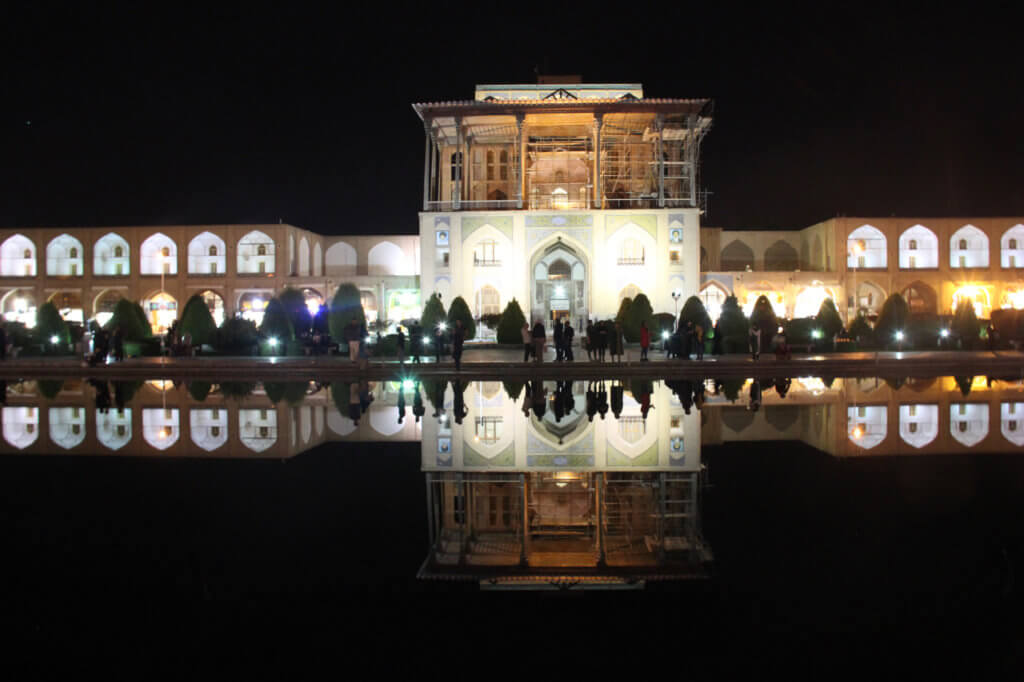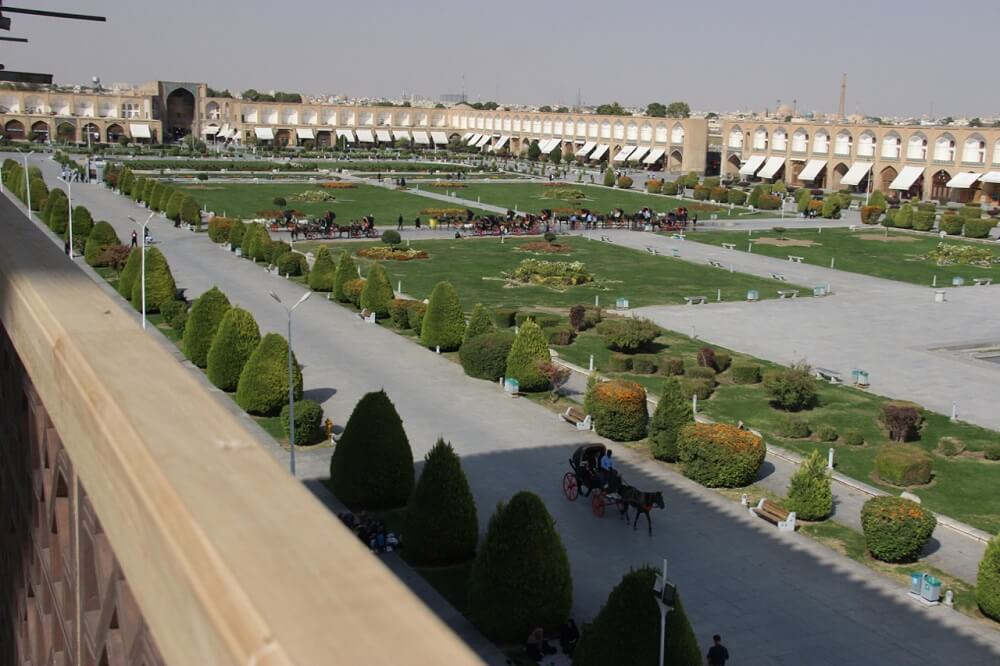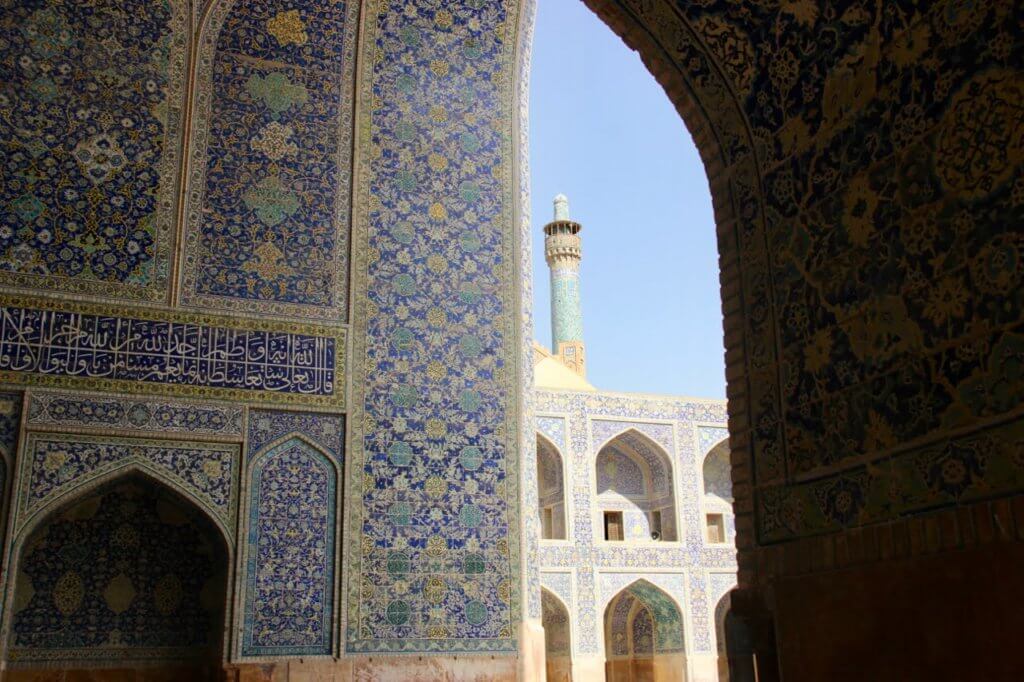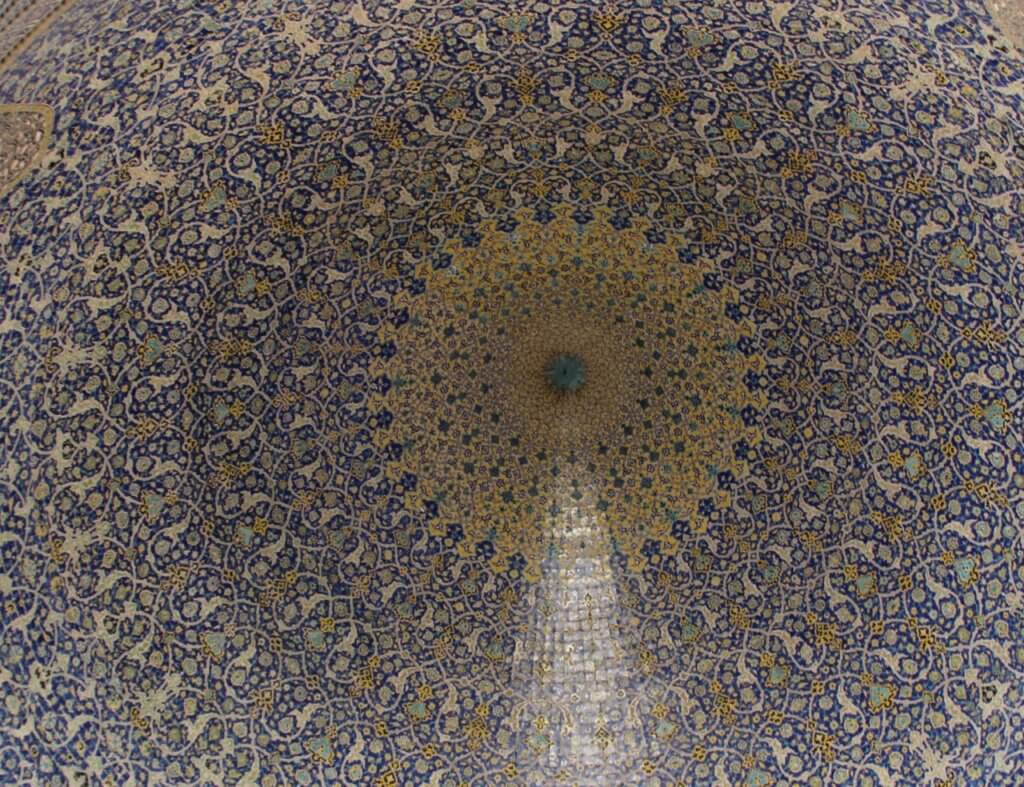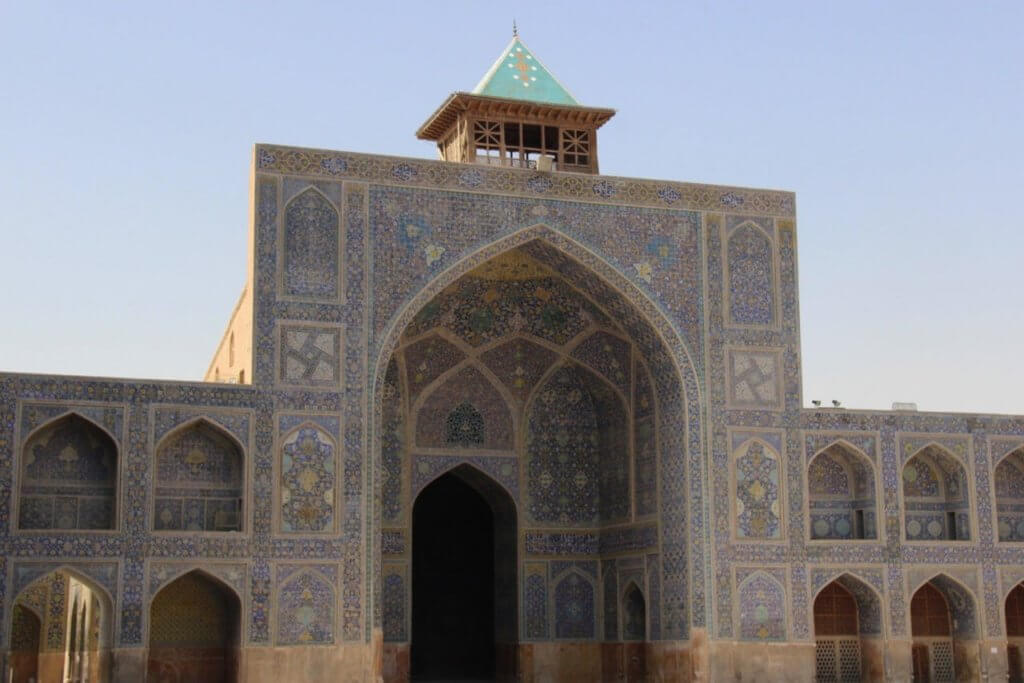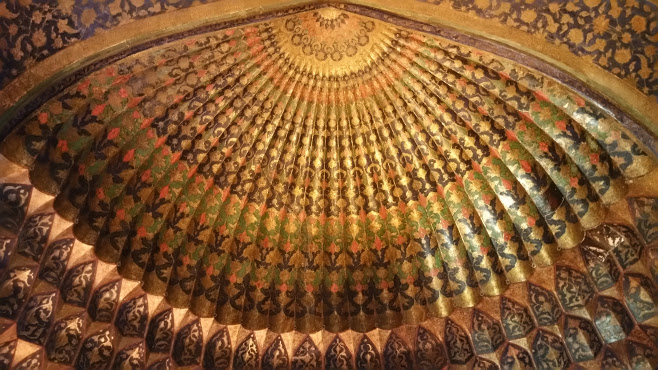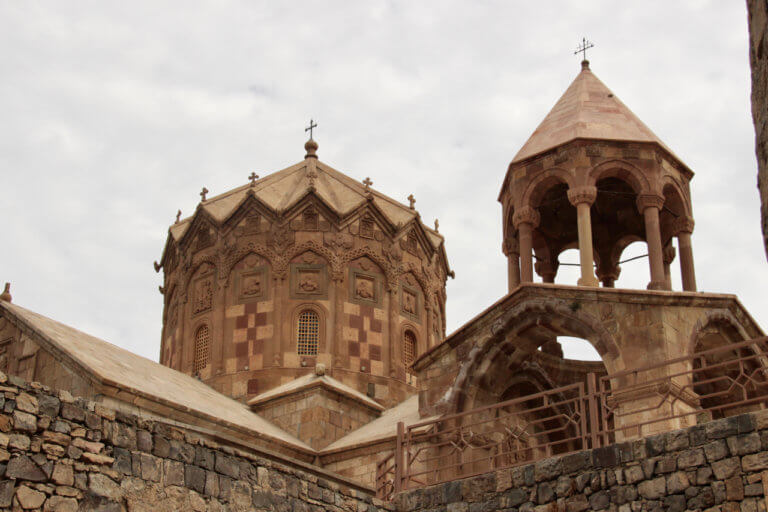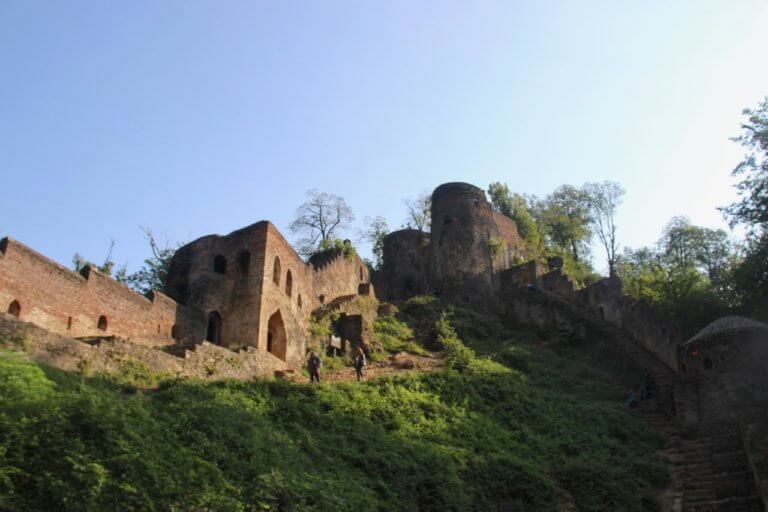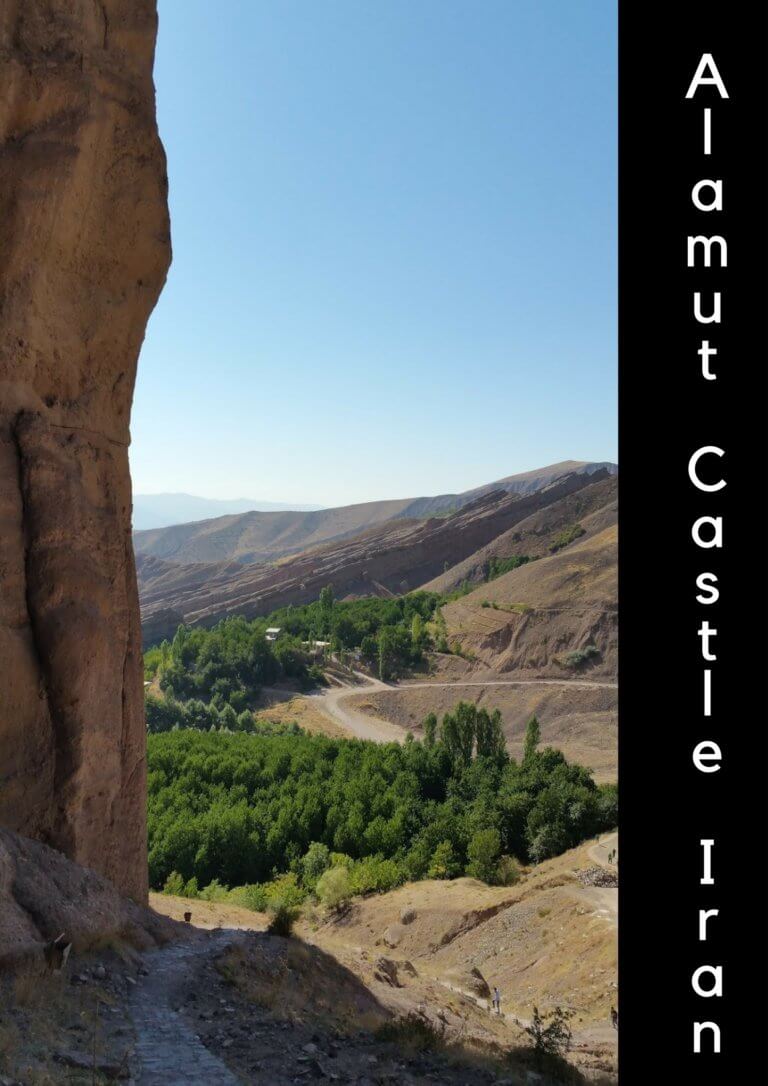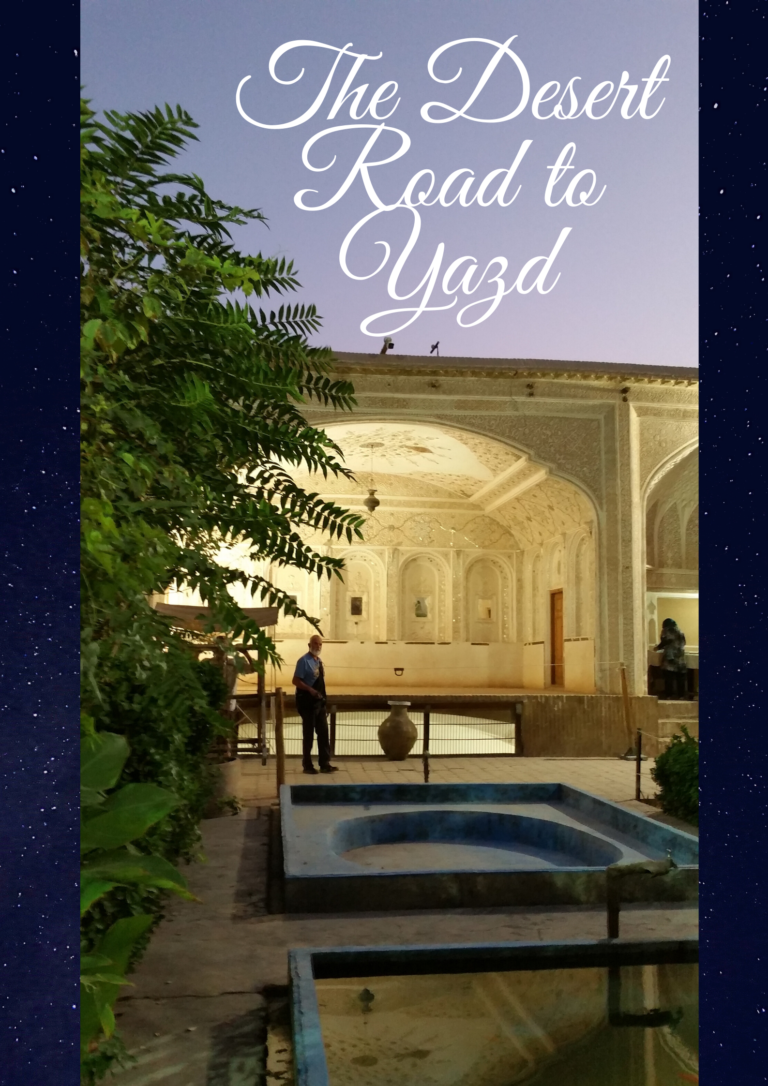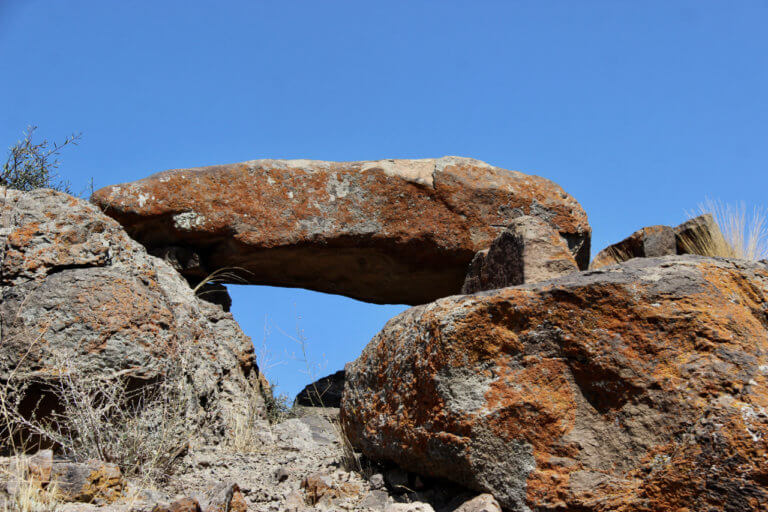Naqsh-e-Jahan Square, Iran Day 250 October 11th 2017
A day for the sights of Naqsh-e Jahan Square. Hardly a challenge – it was right beside our hotel the Partikan Hotel in the centre of Isfahan. From our window we caught a sliver of the square between the building separating us from the Square.
The 15th – 16th century square is a UNESCO World Heritage Site. It is also one of the largest city squares in the world – 160 metres wide by 560 metres long. It is also a living place used extensively by local groups for picnics, evening promenades, shopping. Always alive and active as the day progresses and the lights of night illuminate the surrounding buildings.
Masjed-e Shah (Shah’s Mosque) described as the “Pinnacle of Safavid Architecture” dominates one end of Naqsh-e Jahan Square.
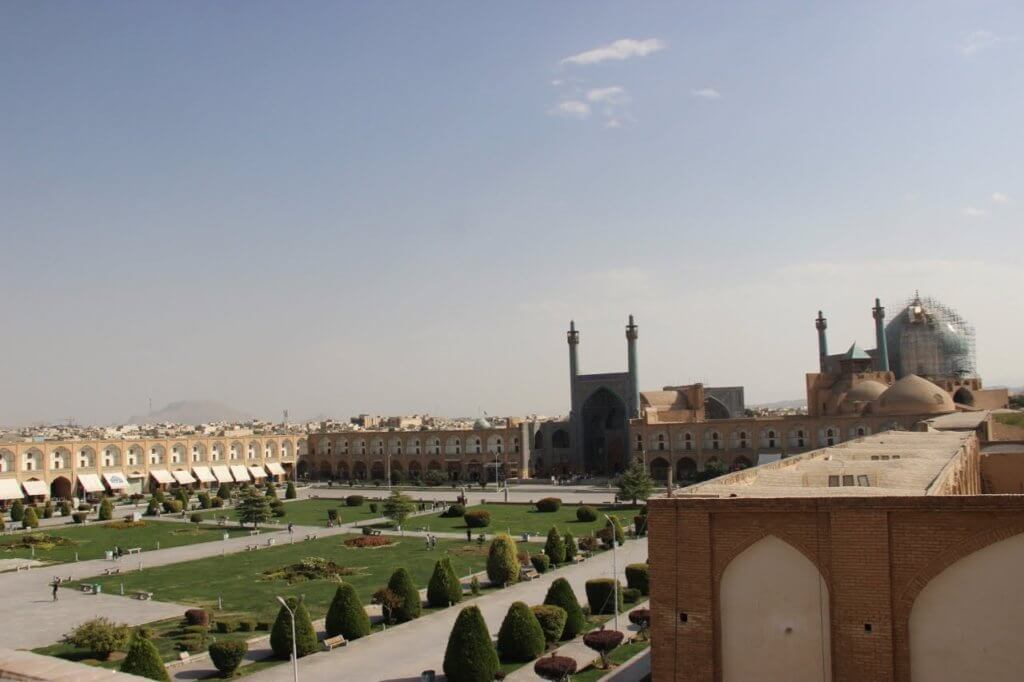
As we entered the young man on the ticket counter struck up conversation and explained he was a student of architecture and wanted to work as an architect in Iran yet that was unlikely. While building and architecture were sorely needed the funding was not readily available. Like many people we met he had friends in Australia.
The mosque both inside and out was a spectacular tiled extravaganza. Plain and patterned blue and white tiles, calligraphy, and inscriptions. Jasper and marble bowls once filled with water for worshippers as they entered.
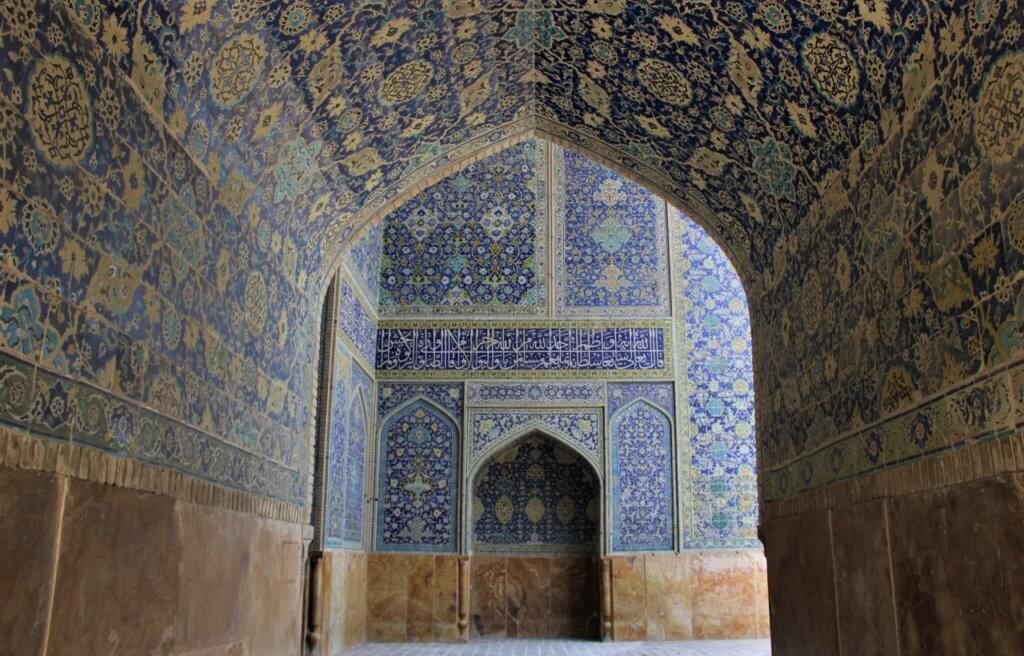
The Masjed-e-Shah has a domed entrance decorated with tiles in shades of blue with yellow with earthy colours to contrast. Flowing floral patterns on the walls and ceiling contrasting with the marbled earthern coloured lower walls.
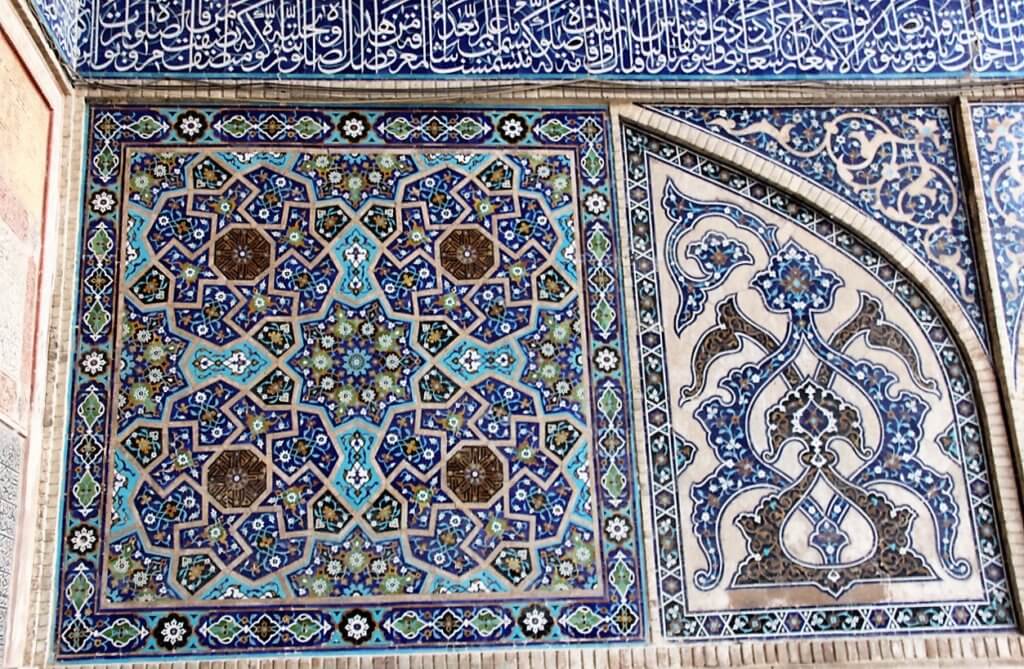
Throughout the mosque complex arches drew your eye through to further shapes and arches beyond. All lush with tiled ornate surfaces. The huge domed entrances at each end of the central square mirrored through smaller domed arches either side and the minarets tiled almost to the top dominated.
On one side the area had once been the school with rows of dormitory like rooms surrounding a calm and pleasant courtyard.
Inside the mosque the domed roof held a surprise – at the entrance light reflected on the domed ceiling the intricately patterned central dome surrounded by intense patterns on small curved shell like shapes coming down to the walls. Lattice work over the windows reflected the patterns on the surrounding tiles.
Ali Qapu Palace – A multi-storied palace bordering the square. Several storeys high which had excellent views over Naqsh-e Jahan Square Square from the top
The exterior walls were tiled with warm pink/red tones quite different to the mosques around it. Ancient wooden verandahs had carved support poles with an intricately patterned ceiling suggesting inlaid work of earthy colours.
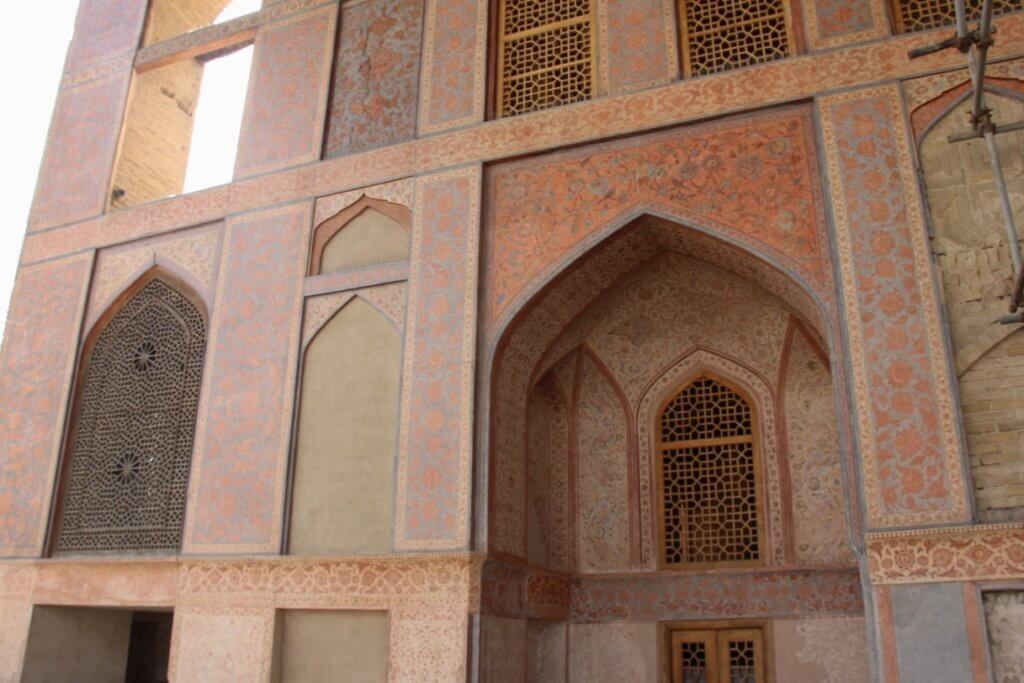
Inside the domes were also decorated in more earthy browns and greens – a calm quiet feeling to the rooms. On one of the upper floors a music room – with similar carved chambers to that at the Sheikh-safi-khanegah-shrine-ensemble – while that was thought to house a Chinese pottery collection it is thought here it may have been to add to acoustic quality.
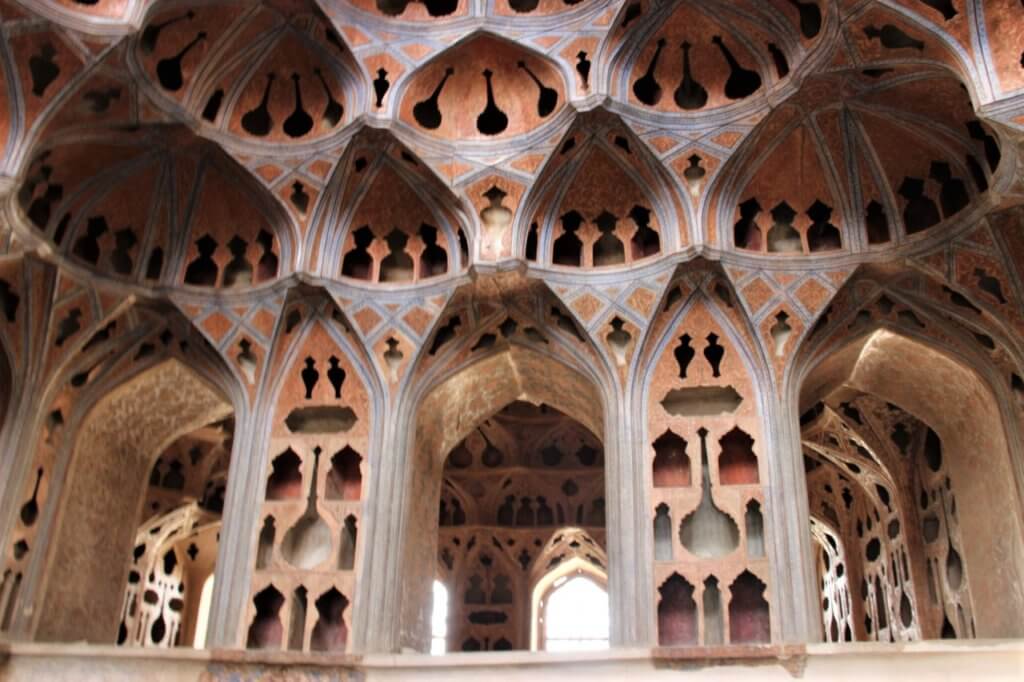
An ancient and well worn spiral stairway still retained the multi coloured tiles with the predominance of blue, white and yellow. Much photographed and very beautiful.
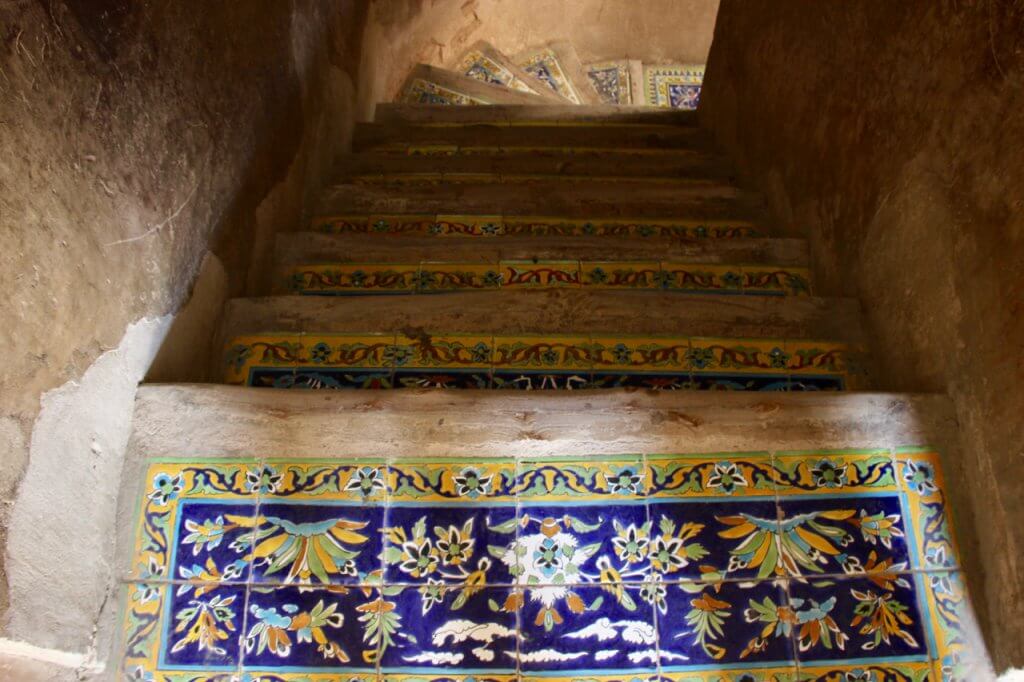
After this we decided to complete our sightseeing day with a visit to the Blue Mosque – apparently the Number One site to see in Isfahan – a little further way from the Square. With our basic instructions and tiny map in the Lonely Planet marking a 1km walk via the bazaar it seemed a nice way to finish the day.
We had not factored in the labyrinth of laneways and buildings within the bazaar that created a 5km walk – seeing us arrive hungry, tetchy and too late to visit the mosque! Next time.
On the way we did see an extensive network of the many areas of the Bazaar which seems to house all of daily life. Caravanseri (once accommodation for travellers), tea shops, stalls selling all daily life needs and more, carpet sellers, craft makers, mosques. Motorbikes buzzed past – at one point even entering a shop, large heavily loaded trolleys were delivered by men of all ages pushing through the crowds.
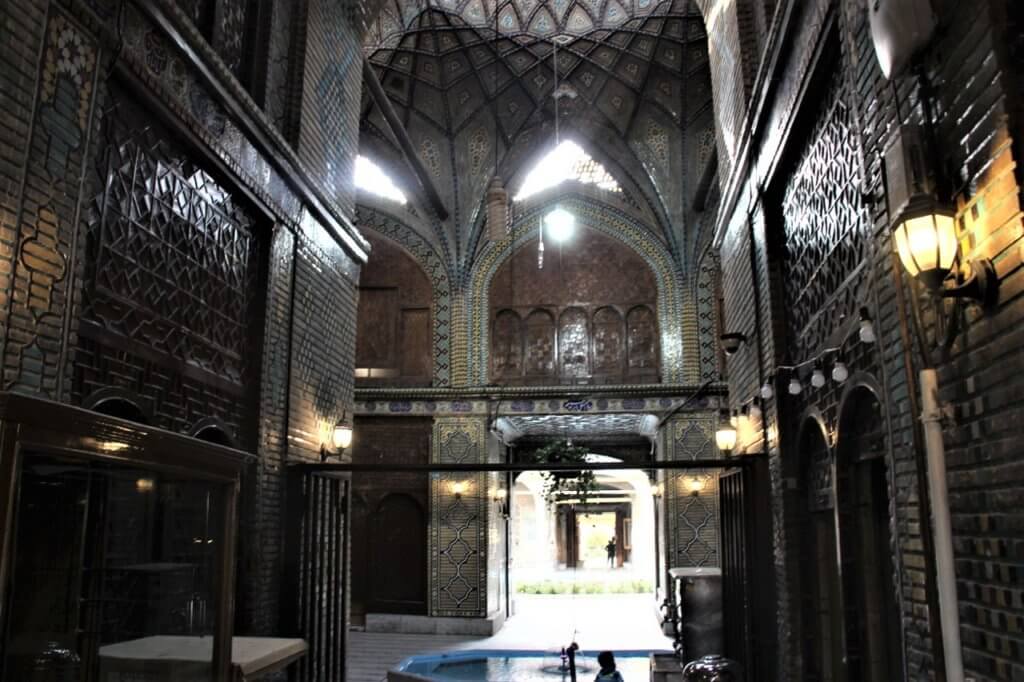
We collapsed into dinner above the Bazaar on the edge of the square at the Nagshe Jahan Traditional Restaurant where seated on our large carpeting dining area we were entertained by tour guides running between the couches organising the food needs of a large group of fussy tourists. A distraction from the almost entire service served on disposable everything – including the plastic table cloth.
